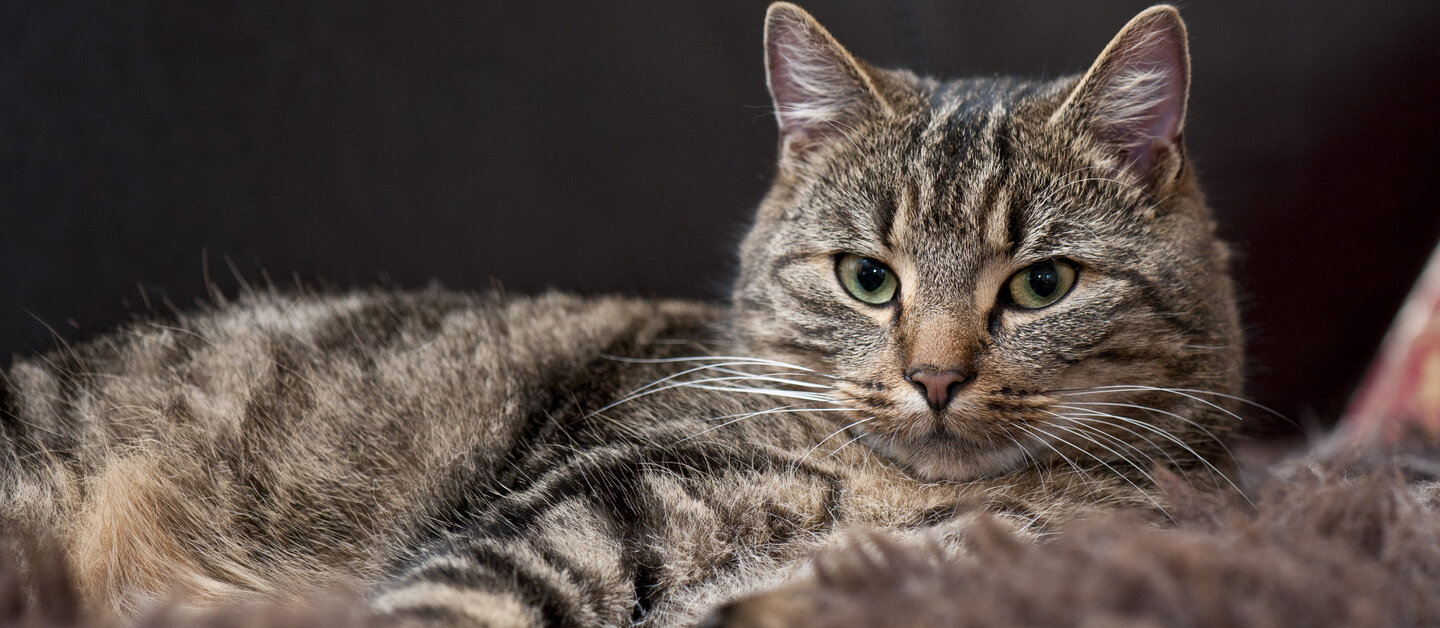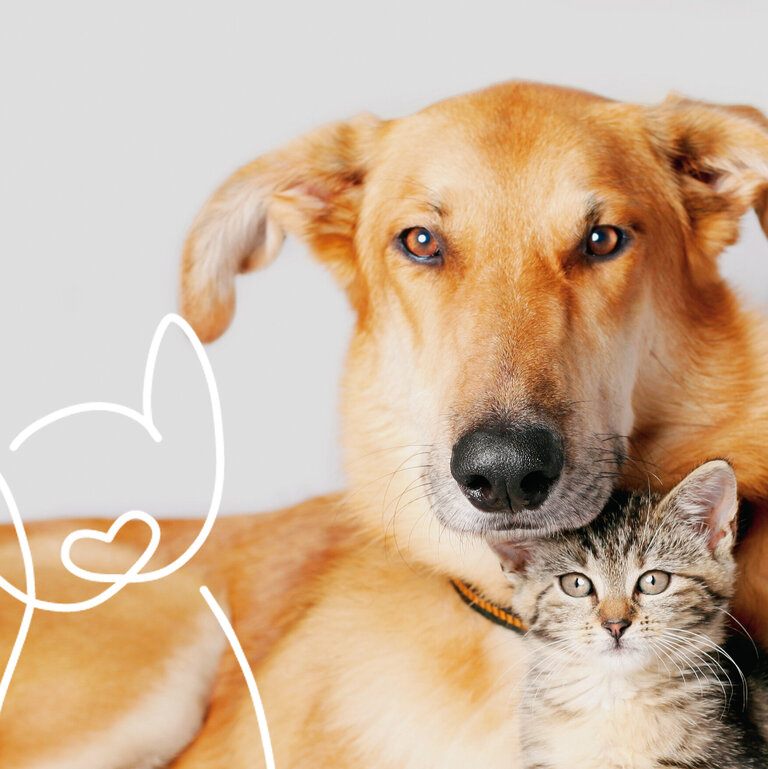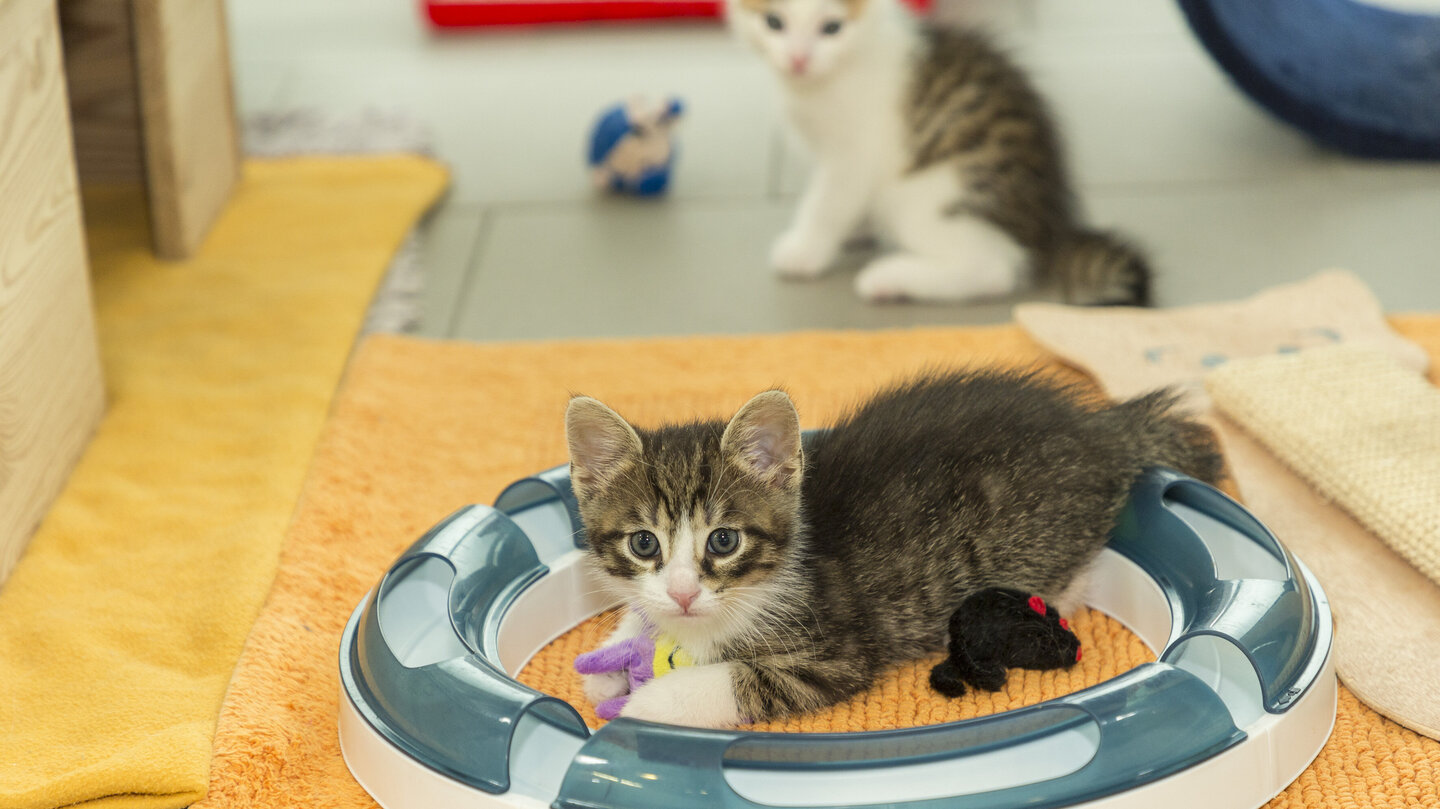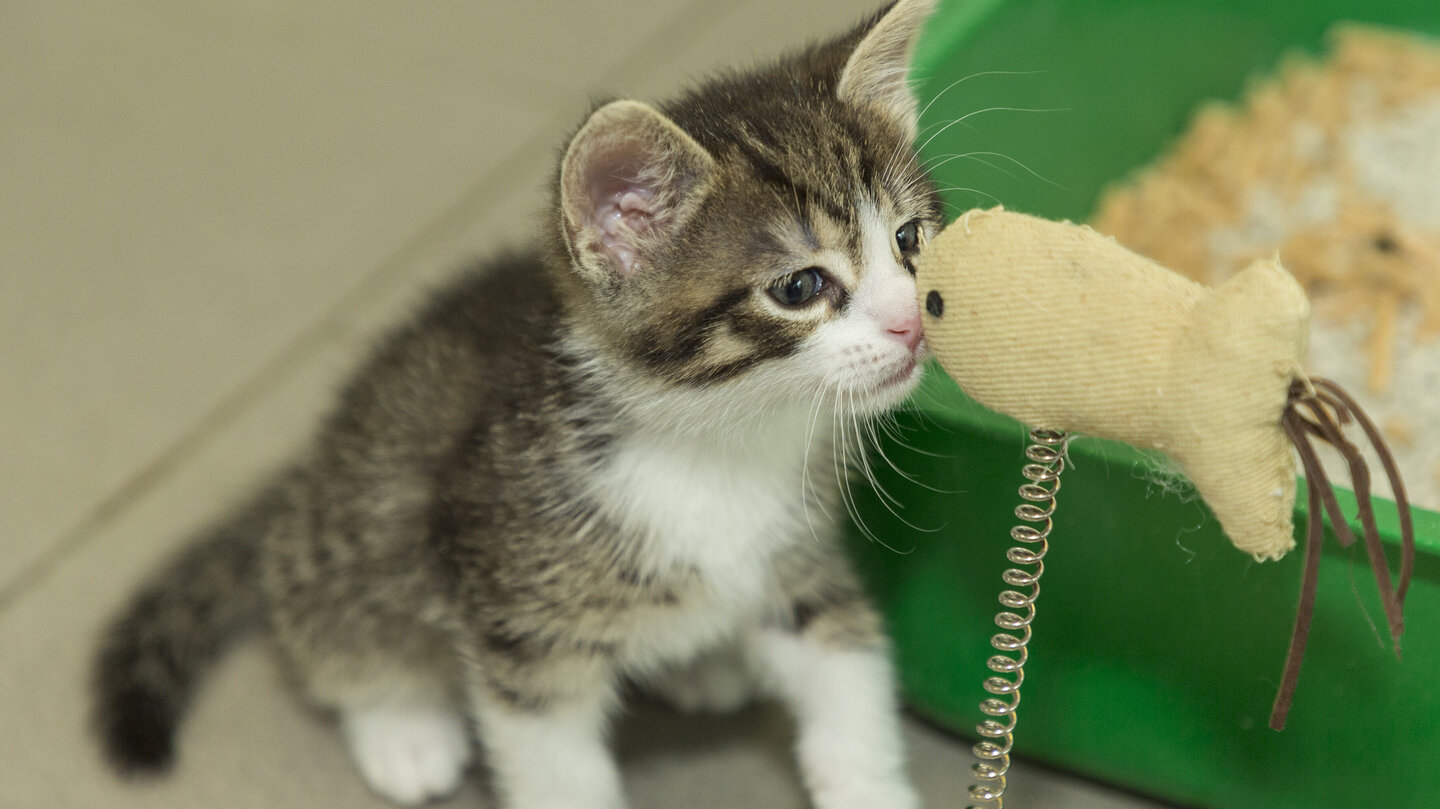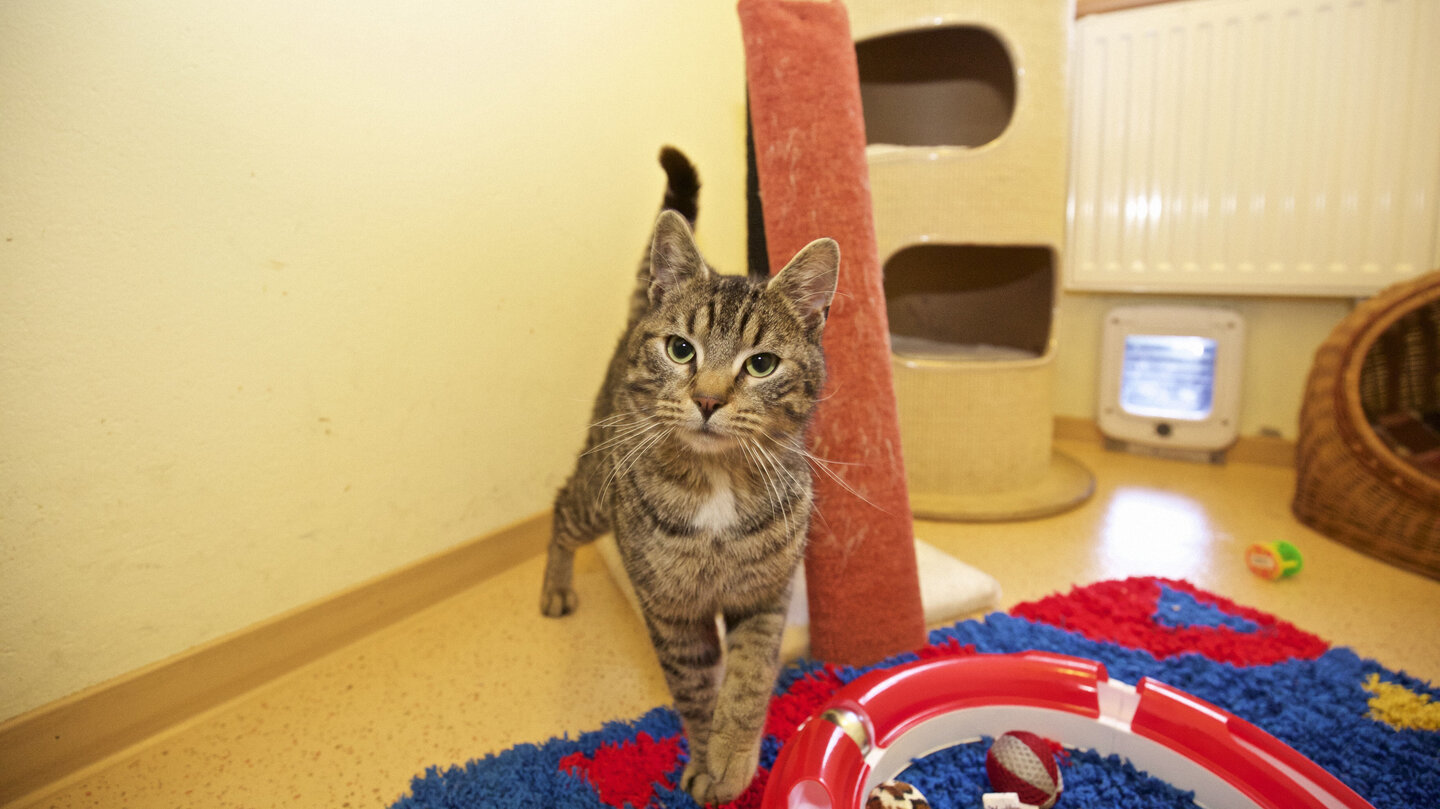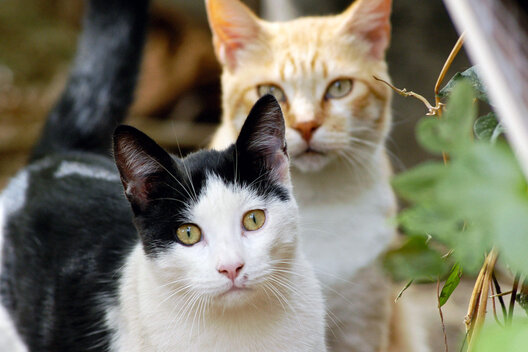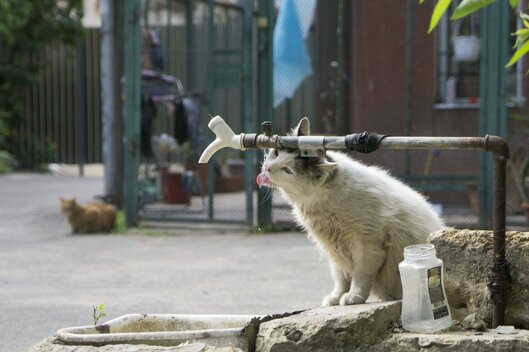Cat keeping: The most important tipsHow to keep cats properly
About 15.2 million cats1 live in German households. This makes cats the most popular pets in this country. If cats are kept appropriately, they can live up to 20 years. However, this requires more than just a scratching post and litter trays. Find out here how to give cats a long and happy life.
Graceful movements, velvety fur and soothing purring - for many animal lovers, cats are balm for the soul. They admire the animals and want to adopt a cat of their own. Especially people who long for a pet and have too little time for a dog often think that cats are less demanding. But this assumption is wrong. Cats also have diverse needs and their husbandry requirements should not be underestimated.
Many cats like company
Cats are said to be loners. This is only true for some of them and depends not only on their genetic make-up but also on their experiences as kittens. Cats that have grown up with other cats in their first weeks of life continue to appreciate the closeness of their conspecifics. They seek physical contact, groom each other and play together. For indoor cats in particular, you should aim to keep them together with other social cats. It is advisable to directly adopt two cats that get on with each other2. If it becomes apparent that a cat is a loner, it is best to keep it alone.
Move in at ten weeks at the earliest
If you take in young cats that have been accustomed to close contact with humans in their first weeks of life, they should stay with their mother and siblings for at least ten - preferably twelve - weeks and only then move into their new home.3 Same-sex, neutered animals generally get along better with each other than male and female cats. We generally recommend looking in animal shelters first, as there are many wonderful cats waiting for a new loving home. These include many older cats, who can enrich your life just as much as younger animals and are grateful for any attention.
Always an extra litter tray
The quiet place for cats should be as quiet as possible in the truest sense of the word: cats want to be undisturbed when doing their business and feel safe. They also need to be able to observe their surroundings. The ideal location for litter trays is therefore quiet and at the same time provides an overview of the room. If you keep several cats, the litter trays should not be in a dead end. The following applies to the number: there must always be one more litter tray than there are cats in the household. If there are two cats, at least three litter trays are required. A litter box should be at least big enough for the cat to have enough space to turn around, squat and scratch. The rim must also be designed in such a way that the animal can get in and out easily. We do not recommend litter trays with lids or additional flaps. Not only do they collect dust and odors, they also cause ventilation problems. These clean and odor-sensitive animals attach particular importance to hygiene. You should therefore remove any droppings from the litter tray several times a day. Always use low-dust cat litter without fragrances. The entire litter tray must also be cleaned regularly. Dispose of all the litter and wash the tray thoroughly with hot water. Toilets, food and water points should be as far away from each other as possible.
Cats are self-determined animals
Cats are freedom-loving animals and value their independence. They feel most comfortable when they can decide for themselves whether they want to be in company or not. If you give them the space they need, cats will approach you on their own and may become even more affectionate. Therefore, don't force your cat if it wants to be left alone and only give it cuddles when it is ready for them.
Fun and games: cats need something to do
Cats get bored quickly, especially if you keep them exclusively indoors. Extensive play is therefore very important and also strengthens the bond with your animal companion. Make playing a fixed ritual, preferably at a certain time of day. You should also take into account the hunting instinct of cats. They love toys that imitate their prey - anything that rolls, runs or flies is ideal. Use feather fishing rods, balls and crumpled up paper or pieces of cloth tied to a string to play with your cats.4 However, remember to put the toys away afterwards if there is a risk of them injuring themselves or even strangling themselves. Cats also quickly lose interest if the toy is always available to them. Food toys such as fumble boards also keep the animals mentally busy.
How much does a cat cost?The examples are minimum costs and a rough estimate*

Purchase price when adopting from a shelter, pure-bred cats from a breeder can cost up to several thousand euros.

e.g. for food bowls, hiding places and cushions, scratching posts/boards, litter trays, toys etc.

for food, health checks with vaccinations, deworming, parasite treatment, litter for the litter box, surgery/animal health insurance if necessary, etc.

e.g. visits to the vet, medication, neutering, identification with transponder and microchip etc.
Structure your home in a cat-friendly way
It is important that the home is structured in a way that is suitable for cats and that the animals can use several levels - such as cupboards or empty shelves.5 The home should also ideally have a varied design:
- Climbing opportunities, raised lying areas, vantage points, scratching opportunities and several hiding and retreat areas are essential.
- Being able to watch what's going on outside from a windowsill is like watching television for cats.
- A secure balcony offers even more variety and fresh air.
Being outdoor is an enrichment
Cats love to go exploring. This is why going outside is a great enrichment for cats' everyday lives. However, this only makes sense in traffic-calmed areas with lots of greenery. With regular outdoor access, it is important that the cats have access to the apartment or house at all times, for example through a cat flap. However, please note that road traffic is a serious risk. Kittens can easily have accidents on their first outings and should take a few weeks to get used to their new home. You should accompany your fosterlings, regardless of their age, on their first forays.
Neutering means animal welfare
Regardless of gender and whether you keep your cat outdoors or only indoors, you should always have your cat neutered. By making this decision, you are actively contributing to animal welfare. Because cats from private households that are not neutered contribute to the growth of the population of free-roaming cats. More and more cats are already fighting for survival on the streets. By neutering cats, you can directly help to reduce their suffering. It is also important to have your pets identified with a transponder and to register them free of charge with FINDEFIX, the pet register of the German Animal Welfare Federation.
Sources
1 https://www.zzf.de/marktdaten/heimtiere-in-deutschland
2 Die Katze als Haustier. In: Lutz H, Kohn B, Forterre F, Hrsg. Krankheiten der Katze. 6., aktualisierte Auflage. Stuttgart: Thieme; 2019. Die Katze als Haustier - VetCenter, Thieme
Vorbeugung von Problemen in der Katzenhaltung. In: Schneider B, Ketter D, Hrsg. Verhaltensmedizin bei Hund und Katze. 1. Auflage. Stuttgart: Schattauer GmbH; 2016. doi:10.1055/b-0038-158800. Vorbeugung von Problemen in der Katze... - VetCenter, Thieme
3 Die Katze als Haustier. In: Lutz H, Kohn B, Forterre F, Hrsg. Krankheiten der Katze. 6., aktualisierte Auflage. Stuttgart: Thieme; 2019
4 Here you will find an overview of which accessories are suitable for cats from an animal welfare perspective. (available in German only)
5 Merkblatt Nr. 189 der Tierärztlichen Vereinigung für Tierschutz e.V. „Mindestanforderung an die Haltung von Katzen“ https://www.tierschutz-tvt.de/alle-merkblaetter-und-stellungnahmen/#c412

